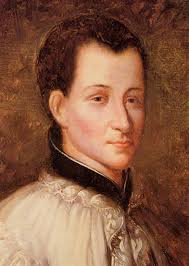“Eucharistic Adoration: Holy Hour Meditations on the Seven Last Words of Christ” is a marvelous book for 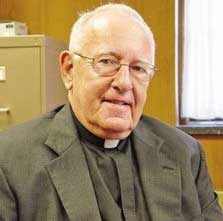 enhancing your experience of one of the Church’s richest devotions.  Msgr. Charles Murphy pours into this work over 50 years of priestly life and pastoral experience in spreading the devotion to the Blessed Sacrament.  He ties together reflections on the seven last words of Jesus with the profiles of seven modern Christians known for their devotion to the Eucharist, including Simone Weil, Edith Stein, Dorothy Day, Blessed John XXIII, Blessed John Paul II, Blessed Teresa of Calcutta, and St. Margaret Mary Alacoque.  In this conversation, we also discuss his book “The Spirituality of Fasting”
enhancing your experience of one of the Church’s richest devotions.  Msgr. Charles Murphy pours into this work over 50 years of priestly life and pastoral experience in spreading the devotion to the Blessed Sacrament.  He ties together reflections on the seven last words of Jesus with the profiles of seven modern Christians known for their devotion to the Eucharist, including Simone Weil, Edith Stein, Dorothy Day, Blessed John XXIII, Blessed John Paul II, Blessed Teresa of Calcutta, and St. Margaret Mary Alacoque.  In this conversation, we also discuss his book “The Spirituality of Fasting”
[powerpress]
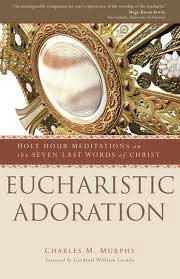 You can find the book here
You can find the book here
Monsignor Charles M. Murphy is currently the director of the permanent diaconate for the Diocese of Portland, Maine. He is the author of a number of scholarly articles and several books, including The Spirituality of Fasting, At Home on the Earth, Wallace Stevens: A Spiritual Poet in a Secular Age, and Belonging to God. Murphy is the former academic dean and rector of the Pontifical North American College in Rome and served as part of the editorial group working in Italy under Cardinal Ratzinger on the third draft of the Catechism of the Catholic Church, which became the fourth and final version.
Murphy currently serves as consultant to the United States Conference of Catholic Bishops committee on catechetics, reviewing materials for conformity with the Catechism. He served as chair of the editorial committee that produced the pastoral letter on environmental issues by the Bishops of the Boston Province and he served as a consultant to the USCCB for their statement on global warming. He has been the pastor of four parishes in Maine and has served his diocese in ecumenical and educational capacities. Murphy holds a doctorate in sacred theology from the Gregorian University, a master’s degree in education from Harvard University, and a bachelor’s degree in classics from the College of the Holy Cross.
Tags: Charles Murphy, eucharistic adoration, margaret mary alacoque, Simone Weil
This entry was posted on Tuesday, February 19th, 2013 at 2:48 pm
You can follow any responses to this entry through the RSS 2.0 feed.
Vatican News Service – CLAUDE LA COLOMBIÈRE, third child of the notary Bertrand La Colombière and Margaret Coindat, was born on 2nd February 1641 at St. Symphorien d’Ozon in the Dauphine, southeastern France. After the family moved to Vienne Claude began his early education there, completing his studies in rhetoric and philosophy in Lyon.
It was during this period that Claude first sensed his vocation to the religious life in the Society of Jesus. We know nothing of the motives which led to this decision. We do know, however, from one of his early notations, that he “had a terrible aversion for the life embraced”. This affirmation is not hard to understand by any who are familiar with the life of Claude, for he was very close to his family and friends and much inclined to the arts and literature and an active social life. On the other hand, he was not a person to be led primarily by his sentiments.
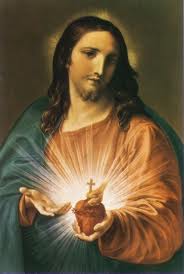 Claude became noted for solid and serious sermons. They were ably directed at specific audiences and, faithful to their inspiration from the gospel, communicated to his listeners serenity and confidence in God. His published sermons produced and still produce significant spiritual fruits. Given the place and the short duration of his ministry, his sermons are surprisingly fresh in comparison with those of better-known orators.
Claude became noted for solid and serious sermons. They were ably directed at specific audiences and, faithful to their inspiration from the gospel, communicated to his listeners serenity and confidence in God. His published sermons produced and still produce significant spiritual fruits. Given the place and the short duration of his ministry, his sermons are surprisingly fresh in comparison with those of better-known orators.
On 2nd February 1675 he pronounced his solemn profession and was named rector of the College at Paray-le-Monial. Not a few people wondered at this assignment of a talented young Jesuit to such an out-of the-way place as Paray. The explanation seems to be in the superiors’ knowledge that there was in Paray an unpretentious religious of the Monastery of the Visitation, Margaret Mary Alacoque, to whom the Lord was revealing the treasures of his Heart, but who was overcome by anguish and uncertainty. She was waiting for the Lord to fulfill his promise and send her “my faithful servant and perfect friend” to help her realize the mission for which he had destined her: that of revealing to the world the unfathomable riches of his love.
After Father Colombière’s arrival and her first conversations with him, Margaret Mary opened her spirit to him and told him of the many communications she believed she had received from the Lord. He 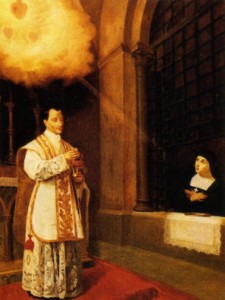 assured her he accepted their authenticity and urged her to put in writing everything in their regard, and did all he could to orient and support her in carrying out the mission received. When, thanks to prayer and discernment, he became convinced that Christ wanted the spread of the devotion to his Heart, it is clear from Claude’s spiritual notes that he pledged himself to this cause without reserve. In these notes it is also clear that, even before he became Margaret Mary’s confessor, Claude’s fidelity to the directives of St. Ignatius in the Exercises had brought him to the contemplation of the Heart of Christ as symbol of his love.
assured her he accepted their authenticity and urged her to put in writing everything in their regard, and did all he could to orient and support her in carrying out the mission received. When, thanks to prayer and discernment, he became convinced that Christ wanted the spread of the devotion to his Heart, it is clear from Claude’s spiritual notes that he pledged himself to this cause without reserve. In these notes it is also clear that, even before he became Margaret Mary’s confessor, Claude’s fidelity to the directives of St. Ignatius in the Exercises had brought him to the contemplation of the Heart of Christ as symbol of his love.
After a year and half in Paray, in 1676 Father La Colombi̬re left for London. He had been appointed preacher to the Duchess of York Рa very difficult and delicate assignment because of the conditions prevailing in England at the time. He took up residence in St. James Palace in October.
In addition to sermons in the palace chapel and unremitting spiritual direction both oral and written, Claude dedicated his time to giving thorough instruction to the many who sought reconciliation with the Church they had abandoned. And even if there were great dangers, he had the consolation of seeing many reconciled to it, so that after a year he said: “I could write a book about the mercy of God I’ve seen Him exercise since I arrived here!”
The intense pace of his work and the poor climate combined to undermine his health, and evidence of a serious pulmonary disease began to appear. Claude, however, made no changes in his work or life style.
Of a sudden, at the end of 1678, he was calumniously accused and arrested in connection with the Titus Oates “papist plot”. After two days he was transferred to the severe King’s Bench Prison where he remained for three weeks in extremely poor conditions until his expulsion from England by royal decree. This suffering further weakened Claude’s health which, with ups and downs, deteriorated rapidly on his return to France.
During the summer of 1681 he returned to Paray, in very poor condition. On 15th February 1682, the first Sunday of Lent, towards evening Claude suffered the severe hemorrhage which ended his life.
On the 16th of June 1929 Pope Pius XI beatified Claude La Colombière, whose charism, according to St. Margaret Mary Alacoque, was that of bringing souls to God along the gospel way of love and mercy which Christ revealed to us.
Tags: catholic, catholic podcast, catholic prayer, cathollc spirituality, margaret mary alacoque, sacred heart of jesus, society of jesus, vatican news service
This entry was posted on Wednesday, February 15th, 2012 at 12:26 am
You can follow any responses to this entry through the RSS 2.0 feed.
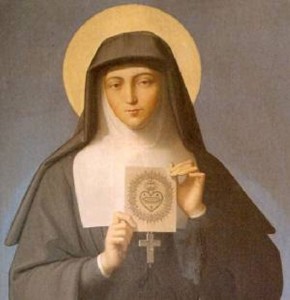 Upon visiting the Chapel of the Apparition in
Upon visiting the Chapel of the Apparition in  Paray le Monial during the 1st Sacred Heart World Congress, Msgr. Esseff reflects on the meaning of the Sacred Heart for St. Margaret Mary, her experience and ours today.
Paray le Monial during the 1st Sacred Heart World Congress, Msgr. Esseff reflects on the meaning of the Sacred Heart for St. Margaret Mary, her experience and ours today.
[powerpress]
At that particular moment it felt as though there was a beating of the Sacred Heart, similiar to what must have been experienced by St. Margaret Mary. “Behold the heart that has loved so much that has received so little love in return.”
Check out Msgr. John Esseff’s website: Â Building a Kingdom of Love
Tags: catholic, catholic podcast, catholic prayer, cathollc spirituality, margaret mary alacoque, msgr. john esseff, sacred heart, sacred heart of jesus, St. Margaret Mary
This entry was posted on Monday, October 17th, 2011 at 2:24 pm
You can follow any responses to this entry through the RSS 2.0 feed.

